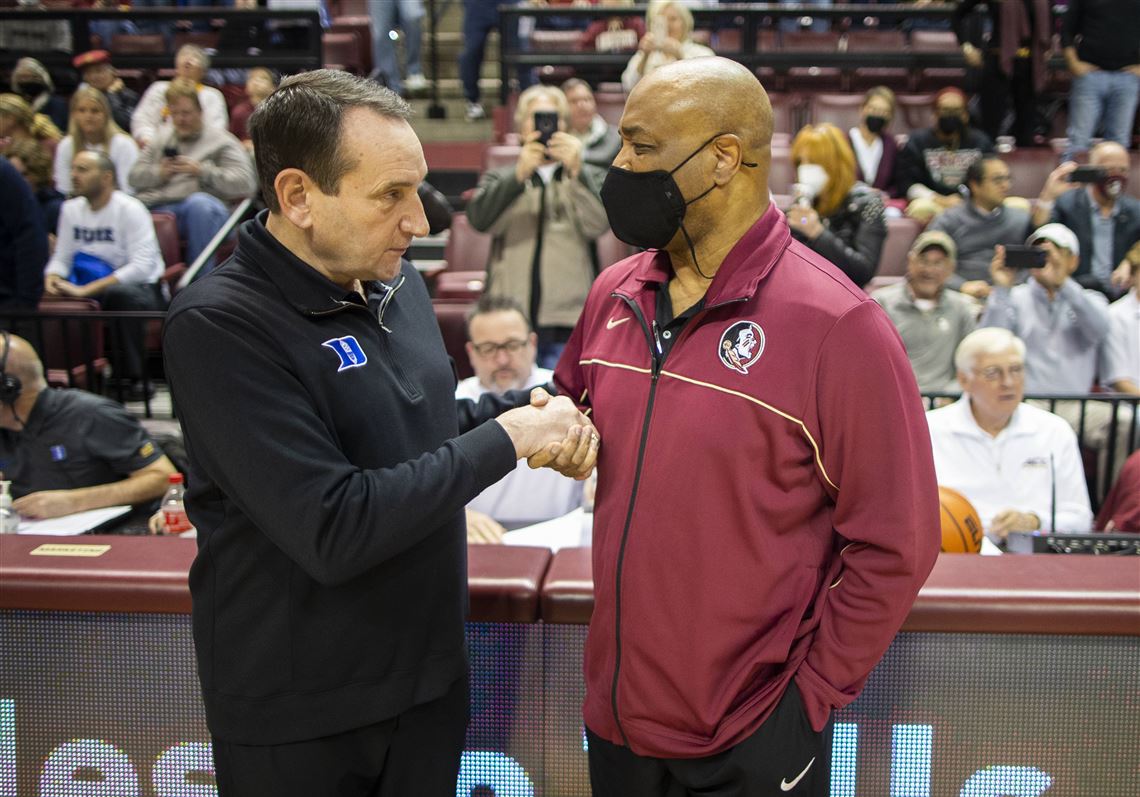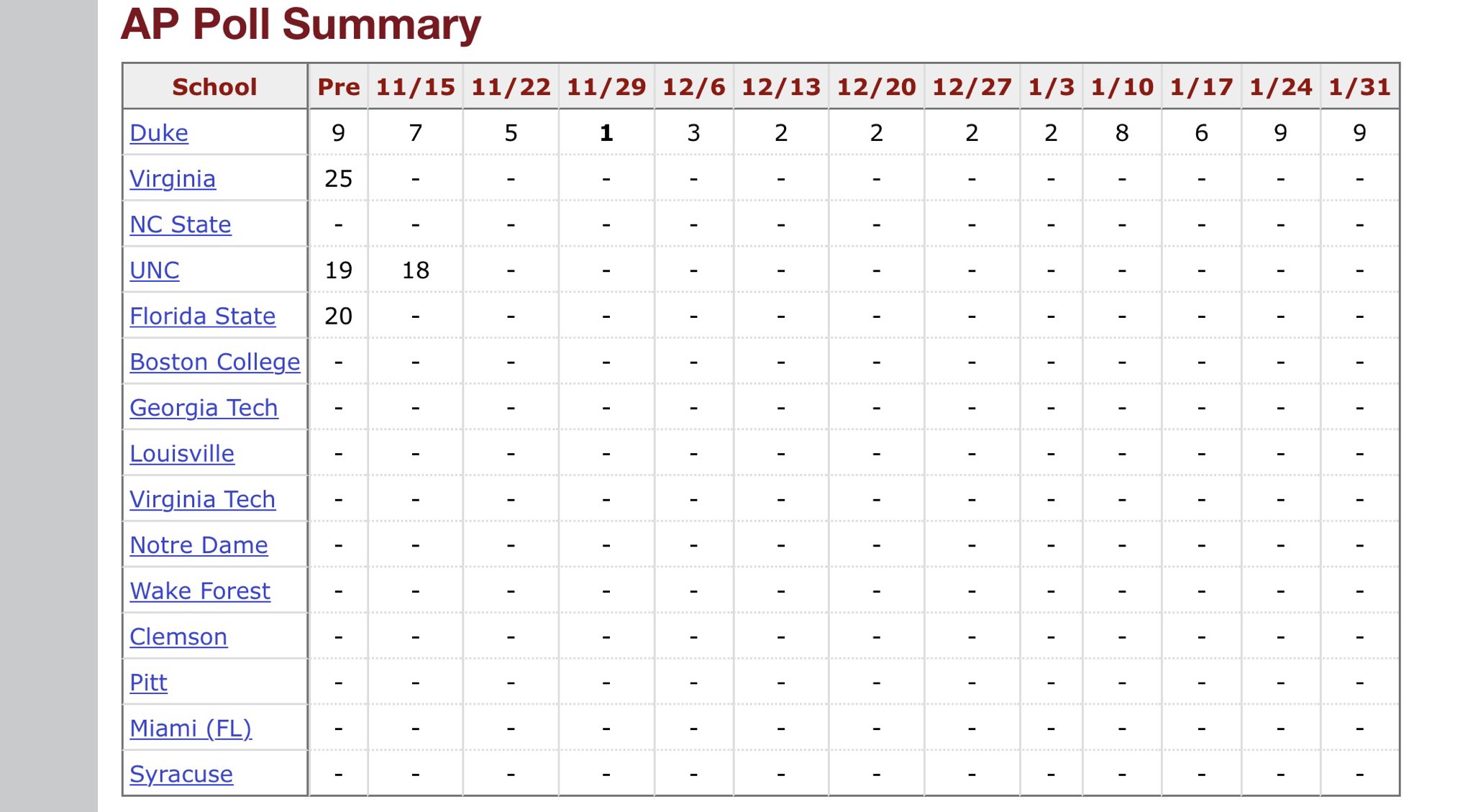
ACC men's basketball is enduring one of its worst seasons in decades. How did it get here?
Whether it was an extra cup of coffee that morning or just the eternal optimism he perpetually exudes, Josh Pastner joined the ACC men’s basketball...
Whether it was an extra cup of coffee that morning or just the eternal optimism he perpetually exudes, Josh Pastner joined the ACC men’s basketball coaches teleconference on Jan. 17 with a certain zeal.
Before even being asked a question, the sixth-year Georgia Tech coach, unprompted, launched into a two-minute defense of his conference. At first, he heaped praise upon North Carolina, which had beaten his Yellow Jackets by 23 two days earlier and caused Pastner enough stress that a pimple had emerged above his left eyebrow. As he continued, his soliloquy extended to the rest of the ACC, which Pastner viewed as the subject of unwarranted criticism.
“People want to talk about the ACC being down. I think that’s crazy,” Pastner said. “The ACC is really good. There are so many great teams top to bottom. The amount of great coaches in this league and great players ... the league for some reason, people are attacking it this year. It’s ridiculous. Duke and North Carolina can win the national championship. They’re good enough to win the whole entire thing. They both might be in the Final Four.”
Fewer than 36 hours after Pastner’s plaudits, North Carolina was blown out by Miami, 85-57, handing the Tar Heels their most lopsided loss in conference play in 10 years.
For the league, it was a snapshot of what has been an uncharacteristically poor year.
A conference that’s home to four of the 10 winningest programs in men’s college basketball history and a combined 18 national championships between its members has attracted a growing number of critics lately to whom coaches like Pastner have had to answer. For 11 consecutive weeks, Duke has been the ACC’s lone team ranked in the Associated Press poll. An NCAA tournament bracket projection from ESPN on Friday featured just four ACC teams, which would be the conference’s lowest mark since 2013, when it had three fewer members than it does now. The number of top-100 recruits joining the conference and NBA draft picks leaving it has waned in recent years.
Those relative struggles raise larger questions about a pillar of the sport that has historically been above blistering critiques. Between an underwhelming present and an uncertain future, with so many of the conference’s coaching luminaries at or near the end of their careers, the ACC is in an unsettling and unfamiliar position.
“It’s a little bit of everything, but I also think it’s cyclical,” said ESPN college basketball analyst Seth Greenberg, a former coach in the conference at Virginia Tech. “This is an abnormality. You had some things that were out of the ordinary for sure for this conference. But it can’t happen two years in a row.”
It’s not necessarily an isolated, one-year occurrence in which seemingly everything that could have gone wrong for the ACC has. This season, though, the dip has been especially pronounced.
Entering the weekend, Duke was the lone ACC program ranked among the top 30 teams on KenPom.com. None of the sport’s five other major conferences had fewer than three teams in the top 30. Of the league’s four projected NCAA tournament inclusions as of Friday, three were slotted as a No. 10 seed or lower by BracketMatrix.com, making an already low figure that much more tenuous. In non-conference play, the way by which the relative strengths of leagues is often measured, ACC teams went 18-30 against major-conference opponents this season (a win percentage of 0.375) after going 23-26 (0.469) during the 2019-20 regular season and 30-25 (0.545) in 2018-19.
“I know we’ve gotten a little bit of a knock. Are we a one-bid league this year? Am I in the America East? I’ve heard so much about our league being down that I’m like, ‘Am I back in the America East?’” Notre Dame coach Mike Brey said sarcastically. “C’mon, now. I know the outside, ‘Well, they don’t have one seeds.’ All I know is the 15 guys coaching in this league, we know how hard this is.”
The question of how the league got here comes with an array of answers, many of which intersect to paint a larger, disheartening picture.
Some of the conference’s problems are perceptual. While Duke has been a top-10 team throughout the season, many of the ACC’s other preeminent programs have fallen short of their lofty reputations.
Barring a miraculous late-season push, Louisville will miss the NCAA tournament for the third time in four attempts after making the field in 13 of the previous 15 seasons (and one of those years it missed was due to a self-imposed postseason ban). Three years after winning a national championship, Virginia is on pace for its fewest regular season wins since 2010-11. After going 32-30 the previous two seasons, North Carolina has shown improvement this year, but has been trounced in many of its bigger games. At 10-11 entering the week, Syracuse was off to its worst 21-game start since the 1968-69 season. In recent years, unexpected NCAA tournament runs masked steps the Orange had taken back since coming over from the Big East. This year, it doesn’t appear as though even that will be possible.
“I think what has happened is we have become accustomed to the same teams over the years being on top,” Florida State coach Leonard Hamilton said. “That’s no longer the case.”
The ACC has also experienced a rather uninspired stretch of coaching hires. Over the past 10 offseason hiring cycles, there have been 13 coaching changes in the ACC. Only two of those coaches won or have won at least 60% of their games at their school.
And yet the coaches roaming the sidelines don’t mean nearly as much as the players taking the court.
“It’s huge, but that’s the chicken, not the egg. The egg is the recruiting,” said Mike DeCourcy, a longtime college basketball writer for The Sporting News. “The egg is the level of talent that’s in the league and how they came to have that issue.”
Even in recent years, the ACC was a haven for NBA talent, accounting for a record 10 first-round NBA draft picks in 2017 and six of the first 11 picks in the 2019 draft.
Last year, however, just seven ACC players were drafted, the league’s lowest mark since it moved to its current 15-member configuration in 2014. No first- or second-team All-ACC selections last season were among the draft’s 60 picks. ESPN’s most recent 2022 mock draft includes only six ACC players, five of whom are from Duke.
That lack of output to the NBA can be tied to a decline in high school recruiting. ACC programs landed 16 of 247 Sports’ top 100 recruits in the 2021 class, the lowest figure under the league’s existing membership structure. In the previous five classes, the ACC brought in an average of 20.6 top-100 prospects. Additionally, the conference had only two members secure top-15 recruiting hauls in each of the past two classes after averaging 3.8 in the six years prior.
The league fell short in the transfer portal last offseason, as well, landing only five of the top 50 available transfers, as ranked by Stadium. It lost more talent than it brought in, as seven of those 50 players were leaving ACC programs.
“College basketball and the culture of college basketball is changing,” Greenberg said. “It changed drastically, let’s face it, last spring when super seniors and the emergence of the transfer portal in terms of immediate eligibility. I don’t think the league did a great job. The schools that did a good job with it are the ones we’re talking about.”
As the ACC has slid, the SEC — the major conference with which it has a sizable geographic overlap — has risen, with five teams in the top 20 on KenPom entering the week. Some in the sport believe the fates of the leagues are intertwined.
Once dismissed as purely a football conference, the SEC has seen many of its members devote more of their vast resources — 10 of the top 25 Power Five schools in revenue during the 2019-20 academic year were from the SEC — to basketball. The men’s basketball budgets of seven of the SEC’s 14 members increased by at least 40% from 2014-15 to 2019-20, according to Department of Education data.
With many schools located in talent-rich areas, that investment has led to recruiting success. Over the past three classes, SEC programs combined to get 21.3 top-100 recruits, up from the 17.6 they averaged in the eight years before that. In contrast to the ACC, the SEC got 18 of the top 50 transfers, a number of whom are now key contributors for ranked teams.
The current rut, of course, doesn’t signal the end of a storied conference.
For all of the SEC’s football riches, the ACC is still home to three of the top five and five of the top 20 schools in men’s basketball spending. Even with recent stumbles, four of 247’s top 15 recruiting classes for next season are from the ACC. Many people interviewed for this story praised the potential impact of new ACC commissioner Jim Phillips, with Greenberg believing the conference “hit a home run.”
Ultimately, in a football-dominated landscape, it’s still a tradition-rich league in which many of its members prioritize basketball.
“If you have a low benchmark, then you’re doing pretty good. But this league has always had a really high benchmark,” said Paul Brazeau, the ACC’s senior associate commissioner for men’s basketball. “If you want to look at it that way, sure, you can be down. The New England Patriots, they only made it to the first round of the playoffs this year and it’s, ‘Oh, the Patriots are struggling.’ It’s the same with the Steelers. Those two teams have been in the playoffs every time you think about it. But times change. Things change, but the foundations are really, really strong in this conference in men’s basketball.”
Still, it’s a league in transition in its most important and visible positions. For all the promise of a new day, there’s also the gripping uncertainty of what it might (or might not) bring.
Roy Williams retired last year at North Carolina after winning three national titles and 903 games over the course of a decorated career. Duke’s Mike Krzyzewski, the all-time wins leader in men’s college basketball and the owner of five NCAA championship rings, is retiring after this season. Many of the ACC’s other top coaches are approaching or are already at an age when many of their peers retire — Syracuse’s Jim Boeheim (77 years old), Florida State’s Hamilton (73), Miami’s Jim Larranaga (72) and even Notre Dame’s Brey (who will turn 63 in March), all of whom are among the 100 winningest Division I coaches ever.
“The concern is making sure all of them are replaced not adequately, but brilliantly, perfectly,” DeCourcy said.
Succeeding a program stalwart certainly isn’t impossible, but it’s a wildly difficult chore, as a number of ACC programs can attest. Last week, Louisville parted ways with Chris Mack, a universally praised hire in 2018 who had a disappointing four-year run trying to replace Rick Pitino. After making 13 of 15 NCAA tournaments from 2002-16, Pitt entered the week with a 72-102 record since coach Jamie Dixon left for TCU in 2016.
But for the man at the center of the highest-profile coaching transition in almost 50 years, the figure perhaps most synonymous with the conference throughout its 69-year history, there’s hope, not fear, about what awaits in his absence.
“This has been a championship-level conference,” Krzyzewski said. “We’ll see how it works out this year. But I don’t have any bad feelings about the future for our conference.”

